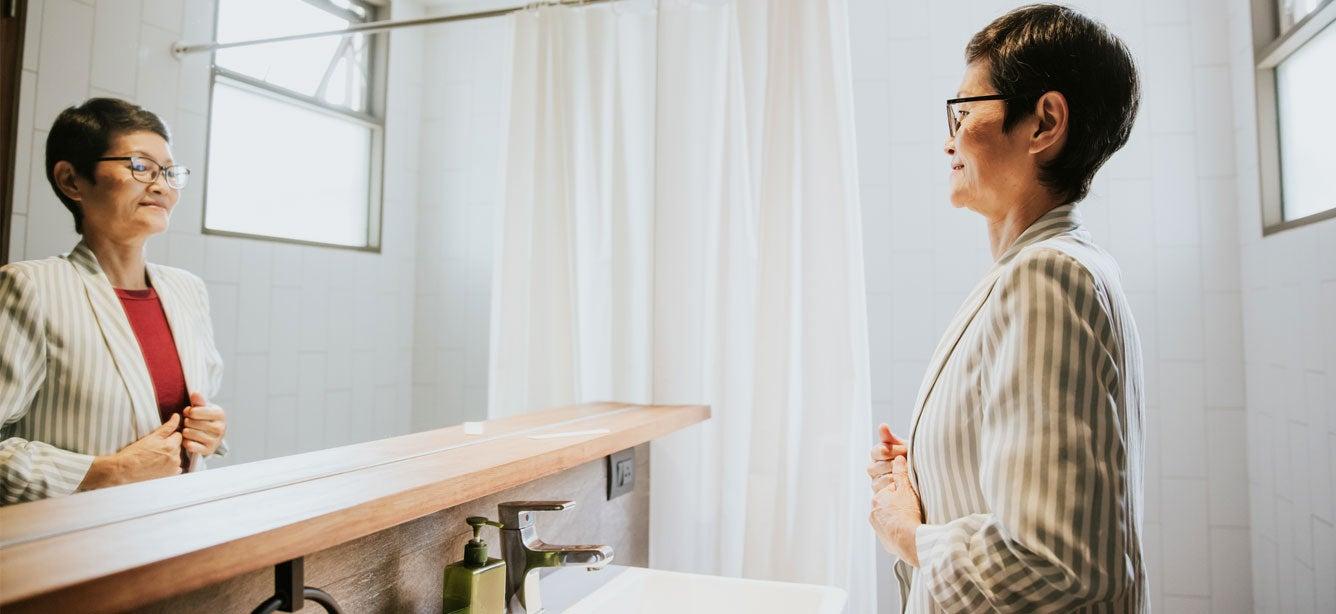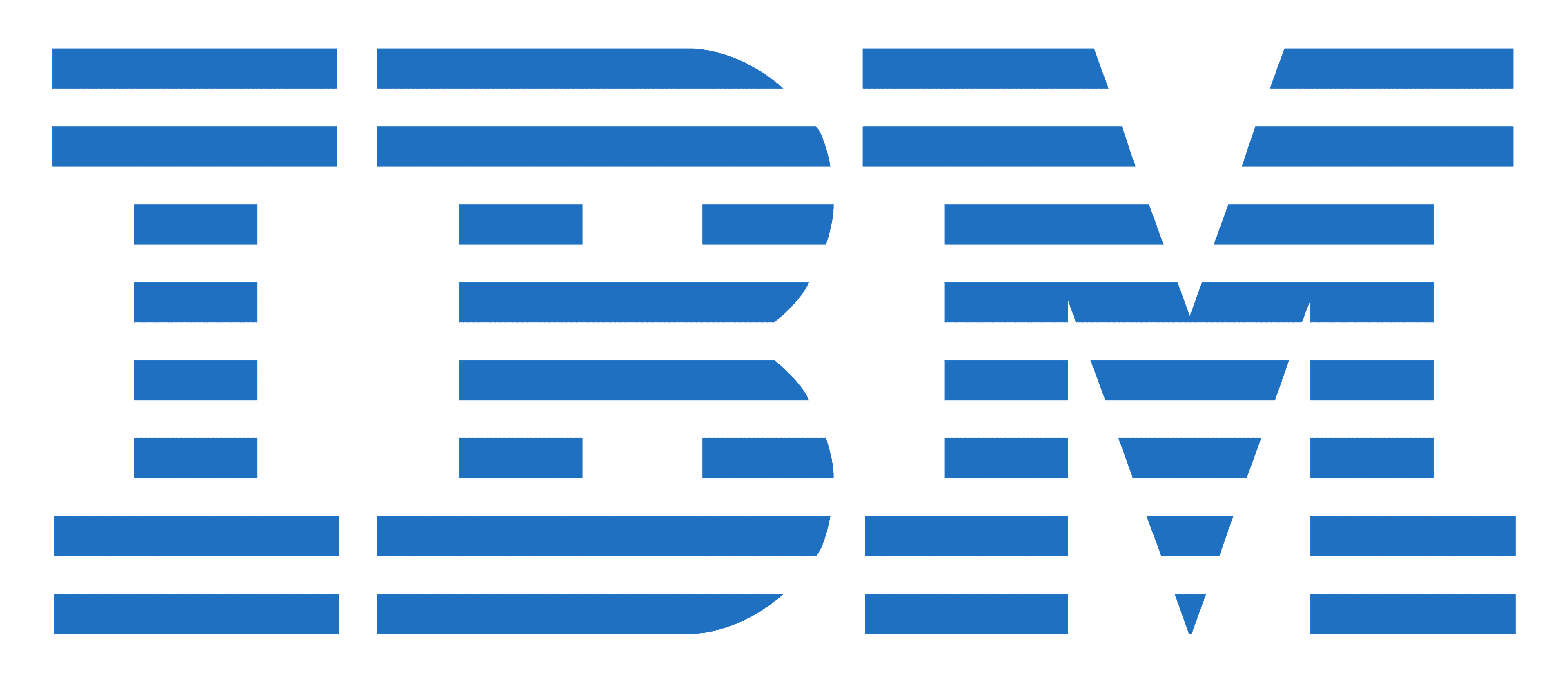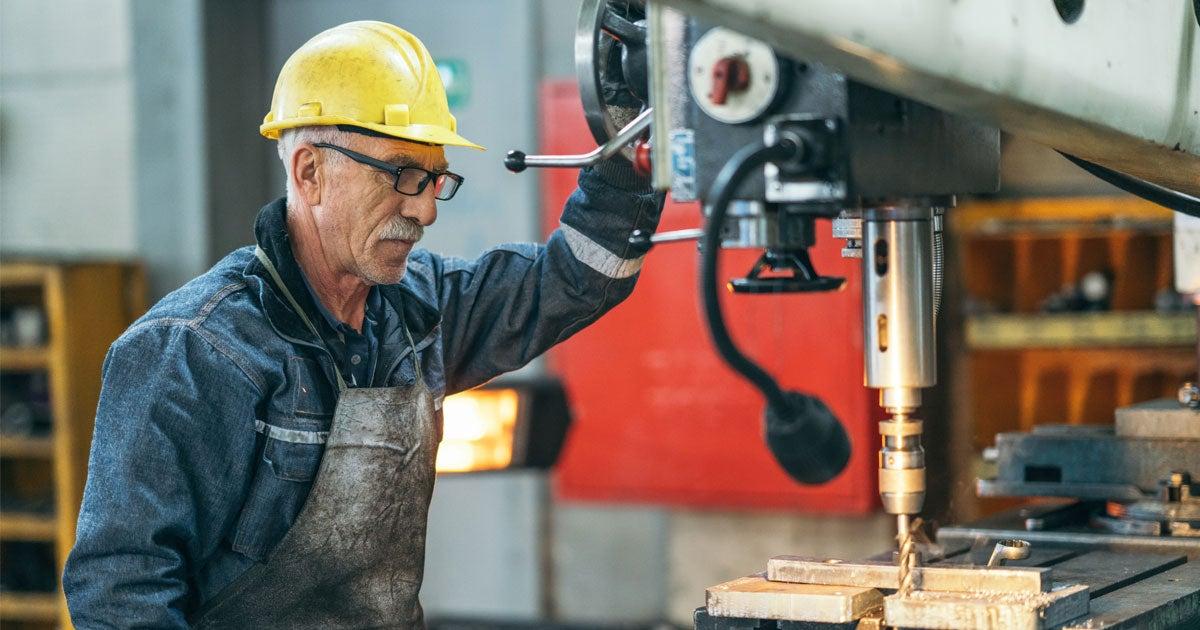
You aced your interview, and you did your follow-up. Now it's time to start looking the part as you get ready for this new adventure. From day one on the job, you want to dress for success. As the saying goes, “Dress for the job you want, not the job you have.”
What does it mean to dress for the job you want?
When you dress for the job you want, you pay close attention to what you wear to interviews and the workplace. You use your outward appearance to help others see you as you see yourself—a professional, responsible, self-confident person who is a natural leader and high performer.
Why is it important to dress for success as an older adult?
Dressing well in the job setting has many known benefits:
- It makes a winning first impression: Whether you’re sitting down for an interview or meeting your new supervisor at work, that person is studying every aspect of your appearance. Your clothing can have as much of an impact as what you say. Wearing smart attire immediately conveys you're a professional who is serious about the job at hand. It demonstrates that you have respect for your potential employer as well as yourself. Paying attention to the smaller details of how you look—such as your hair, fingernails, and shoes—shows you'll be detail-oriented on the job.
- It helps others see you in a positive light: When you dress for the job you want, you gain more respect and credibility in the eyes of other people—not just co-workers, but also managers, clients, and customers. Looking neat and put-together projects success, capability, and professionalism. If you’re in a public-facing job, especially, employers want to know you will present a good image of the company to others.
- It improves yourself self-confidence: High-quality, well-fitting clothes can instantly make you feel more attractive, assertive, and empowered. Dressing professionally helps you feel a greater sense of belonging among your peers and supervisors. It can also give you the boost you need to share your ideas freely and take on new challenges.
- It can improve your job performance: Dressing for success may also affect older adults’ job performance—in a good way. In a 2016 article, Scientific American highlighted several studies demonstrating that what we wear matters. Wearing more formal clothing has been shown to improve abstract thinking and even negotiating skills.
How can you decide what to wear to your job?
Most organizations have certain rules about what their employees wear to work, otherwise known as the dress code. Dress codes are a big part of a company's image and brand. Once you’ve accepted a job offer, take the time to investigate the employer’s dress code. This is usually spelled out in the employee manual. If you’re unsure, don’t be afraid to call the hiring manager to ask. Some typical dress codes are explained below.
Business professional
The business professional dress code is common in office settings in industries such as banking, government, finance, and law. There is not one "right" way to look and it's open to individual interpretation. Some acceptable options:
- A suit or knee-length skirt with a blouse and jacket are both appropriate choices
- Choose suits in muted colors such as black or navy blue, and pair with a white or solid-colored blouse
- Wear clean, close-toed flats or heels that are 3 inches or less, with tan or light hosiery
- Keep jewelry light and tasteful
- A tailored suit in black or navy, or dress pants and a sport jacket
- Pair it with a white or solid-colored shirt and an elegant tie (colors and patterns are ok, but nothing too flashy)
- Choose oxfords or loafers for shoes
Business casual
A business casual dress code provides a bit more flexibility in what you wear to work. It combines traditional business dress with a slightly more relaxed approach. Some acceptable options:
- Skip the suit and opt for separates instead. This might mean a blouse with or without a collar, paired with a below-the-knee skirt or casual slacks
- A simple dress is also acceptable
- Shoes can be closed-toe flats, low heels, or dress boots
- Avoid bold, bright colors and patterns—keep it simple
- For pants, chinos, dress pants, and khakis are all good choices
- Pair those with a casual button-down shirt or a sweater over a button-down shirt
- In some settings, business casual might include a casual blazer or sport coat
Casual
A casual dress code isn’t a green light to dress however you want, but it is less restrictive than other dress codes. Each company may have its own casual dress policy. However, the following tips can help you be comfortable while keeping a professional appearance:
- For tops, choose button-down shirts, polo shirts, or blouses
- Wear T-shirts only in solid colors (no graphics or wording)
- Wear only black or dark-colored jeans that are free of tears and holes
- Stick with close-toed shoes (avoid flip-flops and sandals)
If you’re unsure about the dress code when you first start a job, dress more formally at first. Then, observe your colleagues and supervisors to get a better sense of what to wear.
Other tips to dress for success
Whether your workplace requires executive wear or a uniform, here are some additional guidelines that can help you look your polished, professional best:
- Wear clothes that fit you well
- Choose climate- and weather-appropriate outfits
- Make sure your clothes are wrinkle-free and free of pet hair
- Check for stains, snags, and holes
- Make sure your shoes are clean and polished
- Dress comfortably to avoid being distracted while you work
Need help finding a job after 65?
If you’re ready to venture out into the workplace, you’re not alone—by 2030, nearly 10% of the civilian labor force is expected to be older than 65.1 “Baby boomers have flipped the script on what retirement looks like,” said NCOA’s Maura Porcelli. “They still feel vital, they still have contributions to make to the workplace beyond 65.”
Porcelli is Senior Director of the Senior Community Service Employment Program (SCSEP), which helps older adults get valuable on-the-job training and job placement. SCSEP pairs applicants with part-time positions in the community. You'll get the chance to earn money while building meaningful skills and self-confidence.
That’s what happened with Danny B., a former U.S. Marine who found himself in a desperate situation during the pandemic. “I was a homeless veteran in the fall of 2020,” he told the Felton Institute in an interview about his SCSEP experience. “I needed housing, health care, and stability.”
After receiving temporary shelter through a veterans’ organization, Danny decided he wanted to return to the workforce. That’s how he found SCSEP. "They encouraged me to keep going and never give up,” he says.
With assistance from SCSEP, Danny took part in Jump Start, a two-week workforce development workshop that taught him valuable job skills—like doing a phone interview.
In September 2021, a self-assured Danny brought his apron to an interview to show the hiring manager he was ready to work. He recalls, “They offered me the job on the spot!”
In the year since, Danny’s health and well-being have been transformed. He’s eating healthy and has gained weight. His credit score is up, his bank account is bigger, and he even started a retirement fund. Above all, Danny feels empowered with his newfound skills and confidence and the network of people by his side. In fact, he now has his sights set even bigger.
"I would like to be able to afford a place of my own and have a small organic vegetable farm someday," he explains. It’s clear to us that he’s well on his way.
Get set up for job success with SCSEP and NCOA's Job Skills CheckUp
Searching for a new job? Or returning to work after a break? NCOA has an online employment tool called Job Skills CheckUp that helps older adults get tips on how to succeed as a mature worker. All you have to do is tell us about your goals, describe your current employment situation, and the Job Skills CheckUp will create a personalized plan to help you find job openings, build a professional network, prepare for job interviews, and more.
In addition, jobs offered through SCSEP range from teacher’s aide and childcare provider to maintenance worker. You must be at least age 55 and have low income to take part in this program. To apply, find your local SCSEP office.
Source
1. U.S. Bureau of Labor Statistics. Number of people 75 and older in the labor force is expected to grow 96.5 percent by 2030. The Economics Daily. Found on the internet at https://www.bls.gov/opub/ted/2021/number-of-people-75-and-older-in-the-labor-force-is-expected-to-grow-96-5-percent-by-2030.htm





